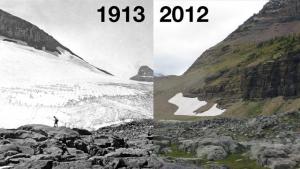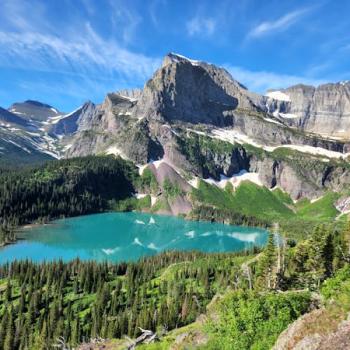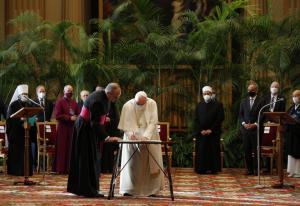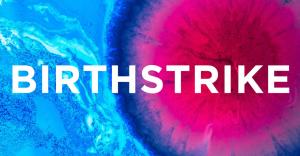
In what ways and how much should the Church should get involved in politics? Presumably the sanctity of life is an issue where the Church has both interest and competence. Catholic sources have approved Trump’s defense of unborn life in his State of the Union address. Not many know that in recent decades the Church has also developed competency on global warming. The esteemed Pontifical Academy of Science has done groundbreaking work on the warming-caused shrinking of glaciers. Pope Francis insists that climate change is a moral and even theological issue as well a scientific one. There is more than enough reason for the Church to speak out on the great omission in Trump’s speech and his presidency – the lack of any concern for our rapidly and dangerously warming planet.
Billions of people depend on glaciers, which the world is losing.
For 11 summers my wife and I sold antiques out of a little store in Babb, Montana, practically on the edge of Glacier National Park. It was a time to enjoy nature, but also sad. Park rangers informed us that the park’s iconic feature, the glaciers, were not going to last more than a couple decades. I imagine the future hikes I might take to St. Mary and Virginia Falls; only if it’s later in the summer the falls will be dry.
Those falls feed the St. Mary River, which supplies water for agriculture in Canada and the Eastern Montana. That’s only one of the three directions in which water flows from Triple Divide, a mountain we could see from our store. And U.S. and Canadian farmers are a small part of the world’s people depending on glaciers not just for a livelihood but even for survival.
Climate change dooms a third of the great ice fields of the Himalayas according to a new report. That’s if the world drastically cuts carbon emissions and keeps global warming to 1.5 degrees. Otherwise, the loss of glacier ice may rise to two thirds. Almost two billion people in India, Pakistan, China, and other countries depend on water from those glaciers. Philippus Wester, lead author of the report, says:
The melting glaciers will increase river flows through to 2050 to 2060 … pushing up the risk of high-altitude lakes bursting their banks and engulfing communities. But from the 2060s, river flows will go into decline.…
Lower flows will cut the power from the hydrodams that generate much of the region’s electricity. But the most serious impact will be on farmers in the foothills and downstream. They rely on predictable water supplies to grow the crops that feed the nations in the mountains’ shadows.
Papal academy studies glaciers
Wester notes that glacier retreat has received less attention than other effects of global warming. We’re familiar with disappearing Pacific islands, Australian heatwaves, California wildfires, hurricanes and typhoons. In these ways global warming concerns millions of people. Even average U.S. citizens are waking up to the problem. But a look at the fate – and the importance – of glaciers reveals another dimension of magnitude.
“Fate of the Mountain Glaciers in the Anthropocene” is a report published by the Pontifical Academy of Science, May 11, 2011. “Anthropocene” is the name of the new geological age we are entering. The name – “recent human” — is warranted because “the climatic and ecological impacts of … human interference with the Earth System are expected to last for many millennia.”
The report’s summary details how global warming is affecting glaciers:
- Glaciers are shrinking in area worldwide, with the highest rates documented at lower elevations.
- Long-term measurement series indicate that the rate of mass loss has more than doubled since the turn of the century. [That is, in the last 11 years.]
- Melting mountain glaciers and snows have contributed significantly to the sea level rise observed in the last century.
- Retreat of the glaciers in the European Alps has been observed since the end of the ‘Little Ice Age’ (first part of the 19th century), but the pace of retreat has been much faster since the 1980’s. The Alpine glaciers have already lost more than 50% of their mass.
- Thousands of small glaciers in the Hindukush-Himalayan-Tibetan region continue to disintegrate, a threat to local communities and the many more people farther away who depend on mountain water resources.
- Robust scenario calculations clearly indicate that many mountain ranges worldwide could lose major parts of their glaciers within the coming decades.
Recommendations
The papal commission’s report notes that two million people die each year because of “Human-caused changes in the composition of the air and air quality.” These would, I think, include deaths from pollution in addition to those related to global warming. In both ways the burning of fossil fuels is an issue for the Church and all pro-lifers. This global emergency requires three different responses, according to the report:
- Reduce worldwide carbon dioxide emissions without delay, using all means possible to meet ambitious international global warming targets and ensure the long-term stability of the climate system. … a rapid transition to renewable energy sources … stopping deforestation, develop and deploy technologies that draw down excess carbon dioxide in the atmosphere. These actions must be accomplished within a few decades.
- Reduce the concentrations of warming air pollutants (dark soot, methane, lower atmosphere ozone, and hydrofluorocarbons) by as much as 50%, to slow down climate change during this century while preventing millions of premature deaths from respiratory disease and millions of tons of crop damages every year.
- Prepare to adapt to the climatic changes … that society will be unable to mitigate.
Blurring the political dividing lines
In view of the current administration’s incompetence or worse and the Church’s expertise and concern in the area of global warming, there’s another requirement. The Church must speak out. Global warming is as much a Catholic issue as abortion and freedom of religion. Catholic media from Commonweal to EWTN should demand action. We can’t say we’re serious about the broad range of pro-life issues when we have Fortnights for Freedom but only one day for “Prayer for the Care of Creation.” Pope Francis declared this day, September 1, several years ago, and few Catholics even know about it.
The Knights of Columbus council of my parish sponsors a billboard proclaiming the right to life of an unborn child. It says loud and clear what everybody already knows: The Catholic Church is against abortion. Coming into town on Highway 14, you reaffirm your own position. You’re either with the Church or against her. The dividing line is clear.
Suppose one day next to that sign you see another Catholic sign. This one proclaims the Church’s position on care for the earth, the world in which we hope babies, born and unborn, will grow up. If you were on the opposite side from the Church before but you like this message, some cognitive dissonance sets in. You get to rethink what the Church means. The dividing line is not so clear now, and the Church is a little harder to ignore.
It’s time for the Church to let the world in on the secret of who she really is and what she is about.
Image credit: National Geographic via Google Images












